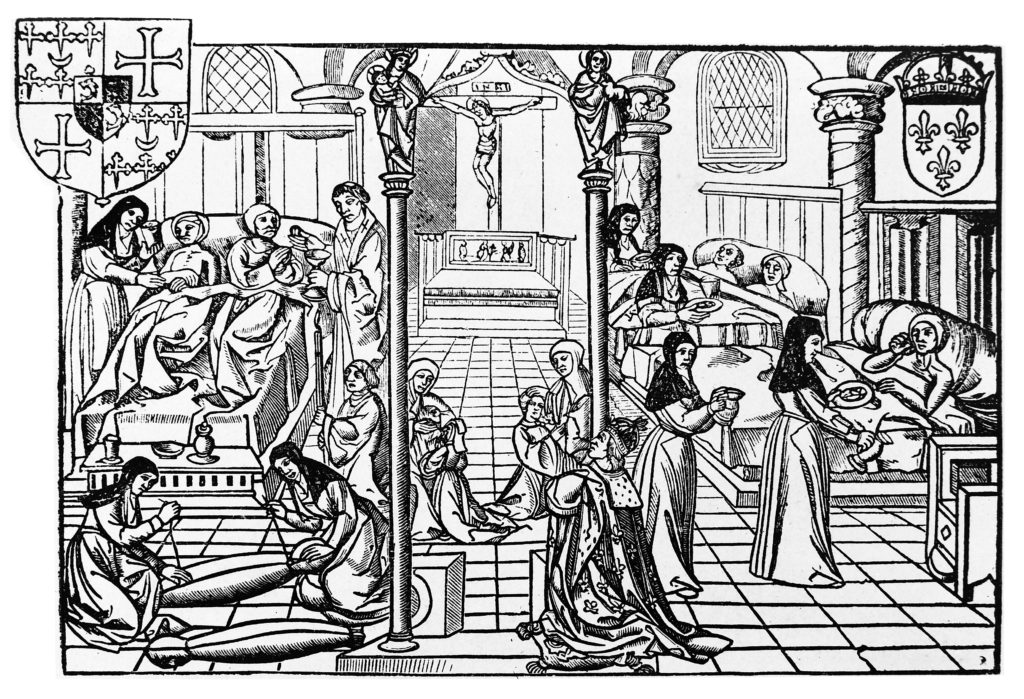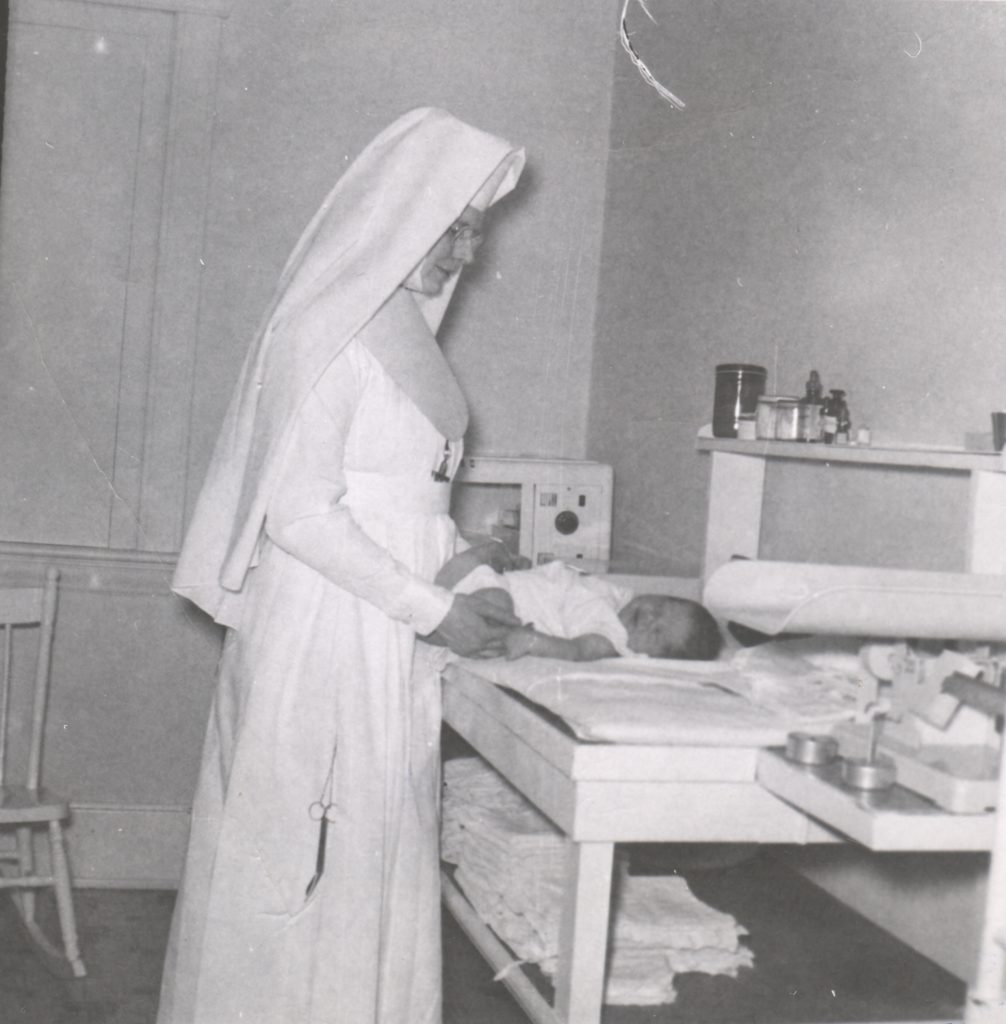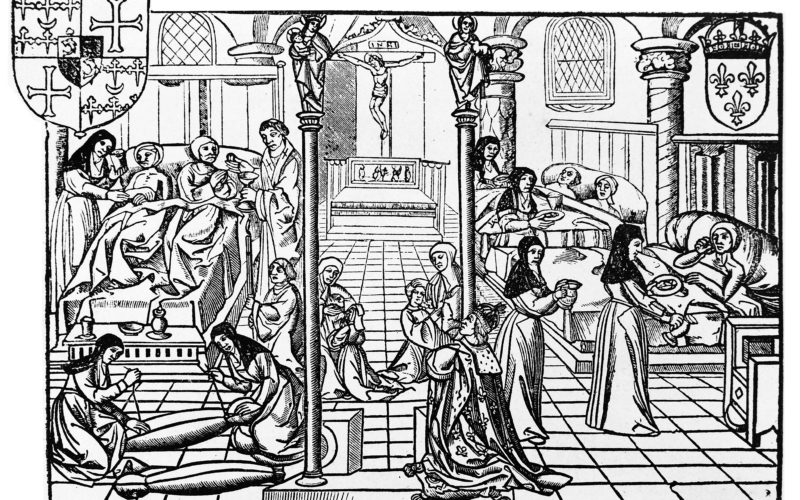By Jeff Kenney
The pre-Christian Greco-Roman world gave us a lot: advances in science and mathematics, the roots of modern democracy, the building blocks of cool gladiator movies. A lot. But some things the ancient Romans were pretty bad at, were charity and mercy, which many felt only perpetuated the problem of those too weak to make it in society.
Ironically, the ancient Romans were pretty awesome at protecting their borders from those attacking from without, but huge swaths of their population might be wiped out by plagues and diseases from within, especially in the increasingly heavily populated Roman cities.
Those physicians who existed could be quite expensive, and sometimes the ill would be quarantined on islands, much like the unwanted babies left to die of exposure on dungheaps – especially girl babies. Ah, the good old days.
In a nutshell, the ancient Romans – and the ancient world in general – lacked a philosophy of the God-given dignity of the human person. That is, until Christianity began to grow, starting the first century AD.
Christian teaching was rife with admonitions to care for the poor, widows, orphans, and yes, the sick – from Jesus comments on caring for “the least of these,” to the parable of the Good Samaritan, to the teaching that man is made in the Image of God, best exemplified in the Incarnation itself: God taking in human flesh.

So, in those early decades and even centuries, Christians became known for their individual care of the suffering throughout the Roman empire, often ironically caring for their own persecutors in the form of pagans who were as likely to imprison or kill them, as thank them.
An unprecedented moment in history came in the mid-200s AD when a nearly 20-year plague spread across North Africa and into Western Europe, killing so many that some 5,000 died in just one day. This terrible event became known as the Plague of Cyprian due to the efforts of the Christian bishop of Carthage, North Africa, Cyprian, who encouraged Christians to donate money and effort to care for the sick and bury the dead, making no distinction between rich and poor, pagan and Christian.
Similar Christian efforts popped up in various places across the Empire in the years to follow. In the early 300s, after the Emperor Constantine became a Christian and it became viable for Christian leaders to operate openly, the Christian xenodocheia was established as a movement to care for the poor and sick in ever-growing urban areas of the Empire. Essentially operating as poorhouses, these institutions grew as Christians with property increasingly donated their lands and buildings to house the poor and suffering, regardless of belief system.
By the 350s AD, new xenodocheions, or poor houses, were established strictly to house and treat those suffering from the dreaded disease of leprosy, and these led to new forms of similar endeavors, including one type set up to house those suffering from treatable diseases. The modern hospital was on its way.
In fact, what many historians consider the first hospital was established by the beloved saint and Bishop Basil “the Great” of Caesarea, who not only fought for the importance of medical knowledge as an instrument of God’s will, but also established monastic communities aimed at caring for the poor and sick, not only headed by clergy for the spiritual well-being of patients, but also staffed with physicians to treat their illnesses.
These Basileias, named in his honor, grew up in places far and wide, and served as the first hospitals in the known world.
In the late 4thcentury, a wealthy Christian widow named Fabiola famously established probably the first hospital in the Latin, or Western portion of the empire. Soon after, the fall of the Roman empire and invasion by barbarian hordes slowed the growth of hospitals, though they continued to grow and flourish as Christian institutions for the next 1,000 years in the Eastern empire, or Byzantium.

On the Western side, under the rule of St. Benedict in the following centuries, Christian monasteries continued to minister to the poor and sick within their walls, emphasizing that treating the poor and the stranger is treating Christ. This outlook is taken “on the road” by way of traveling orders like the Franciscans, who tended to the poor and sick where they found them. And in the 1100s, the Brothers of Hospital of St. John, later Knights Hospitaller, were established as first international religious order.
The Crusades and bubonic plague, among other historical events, only increased the spread of hospitals and Christian orders dedicated to the care of the sick and indigent, and figures like St. Elizabeth of Hungary in the 13thcentury, who built hospitals and funded ministries for the sick and poor, continued to inspire Christians.
Along the way, of course, policies and procedures at these hospitals evolved and grew, establishing more and more systematic methods of medical care, structures and routines, growing more and more into the familiar landscape of hospital care with which we’re familiar today.

There’s a TON more we could say on this subject…the many orders dedicated to serving the sick, the sheer volume of hospitals established across Europe and beyond over the past 1,500 years, the medical missions established by Christians across the entire planet, both hundreds of years ago and still today. In fact, it’s almost inestimable how many people would go without medical care if Christians around the world stepped out of their role as serving Christ through serving the sick today.
So, if you’re interested, there are many more resources available, including an excellent issue of Christian History Magazine, number 101, which is available for free download at christianhistoryinstitute.org.
Image credits: Wikimedia Commons; Giovanni Dall’Orto, Wellcome Images, Nheyob Fortepan, Adományozó, Konok Tamás, Oxfam East Africa, Rama.

